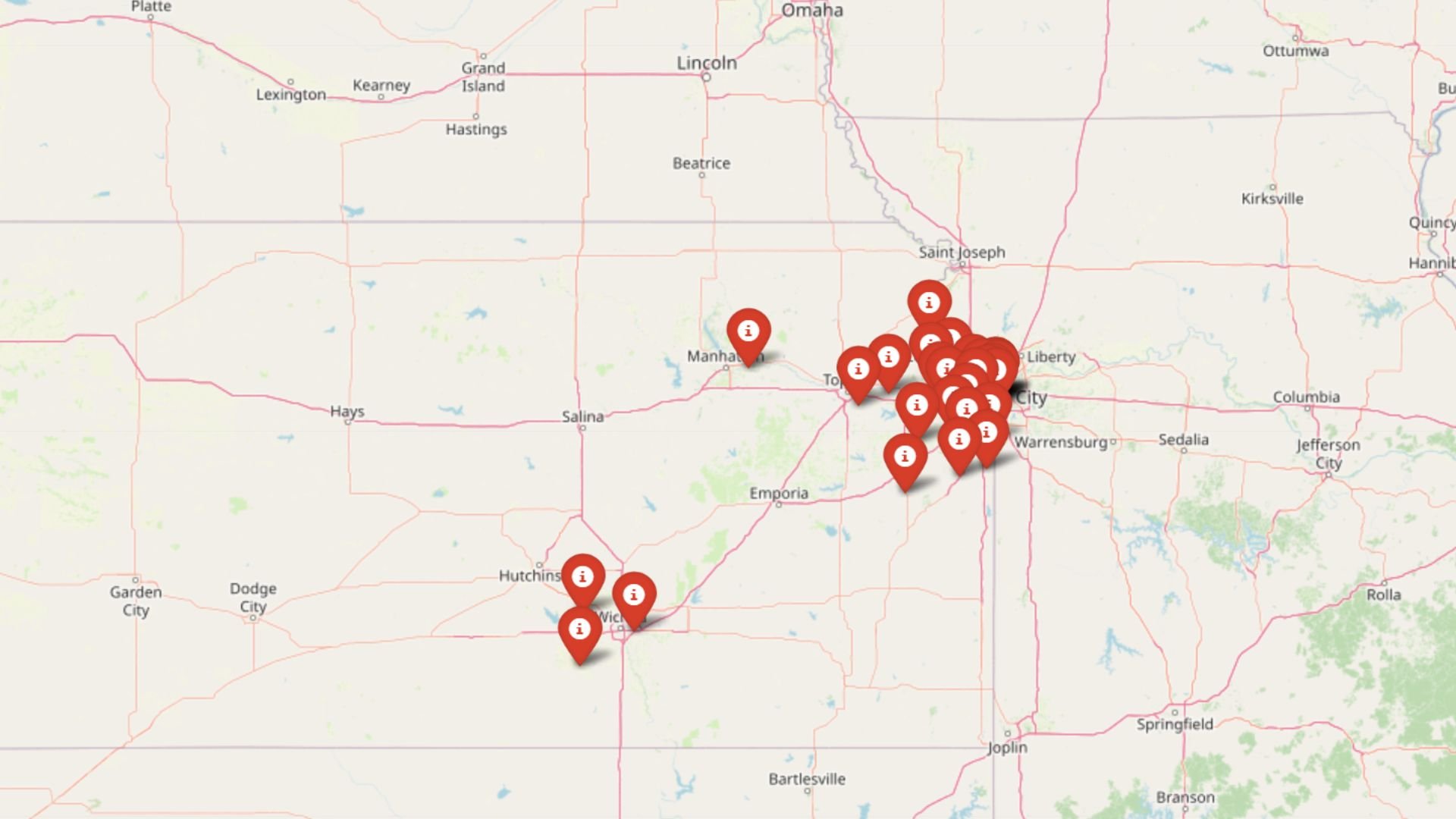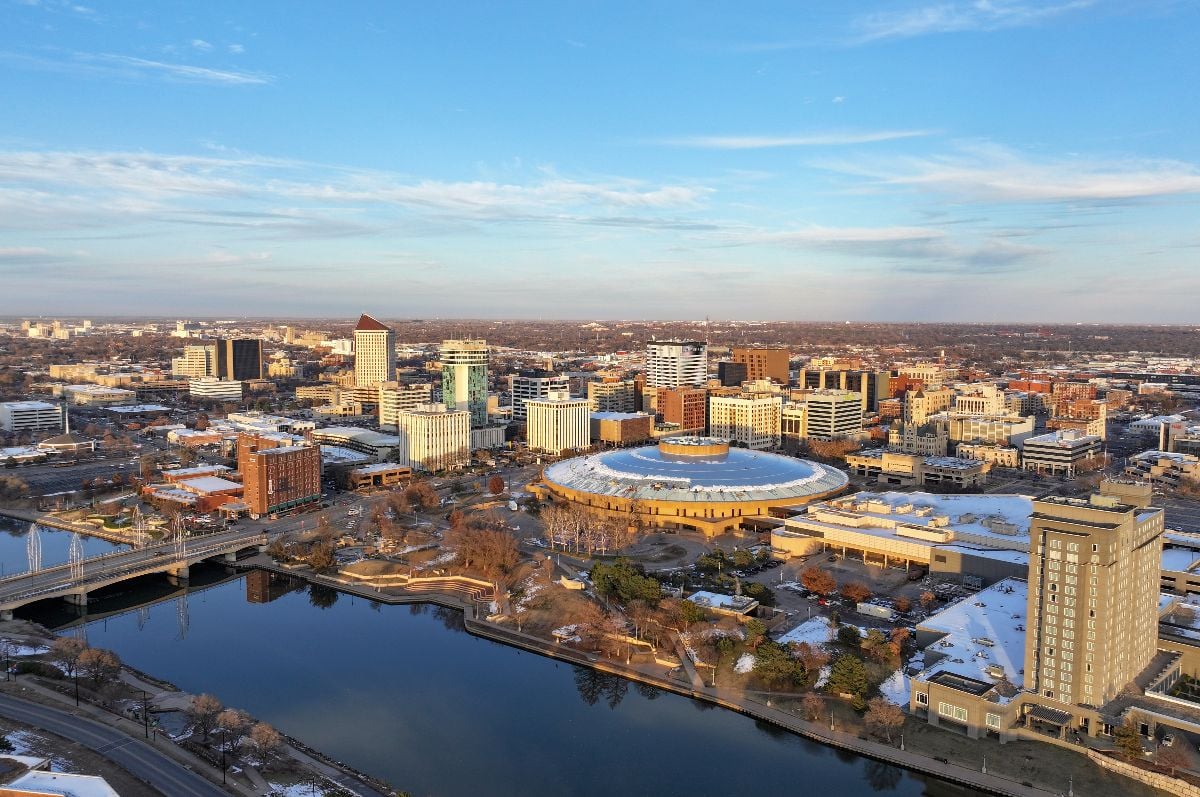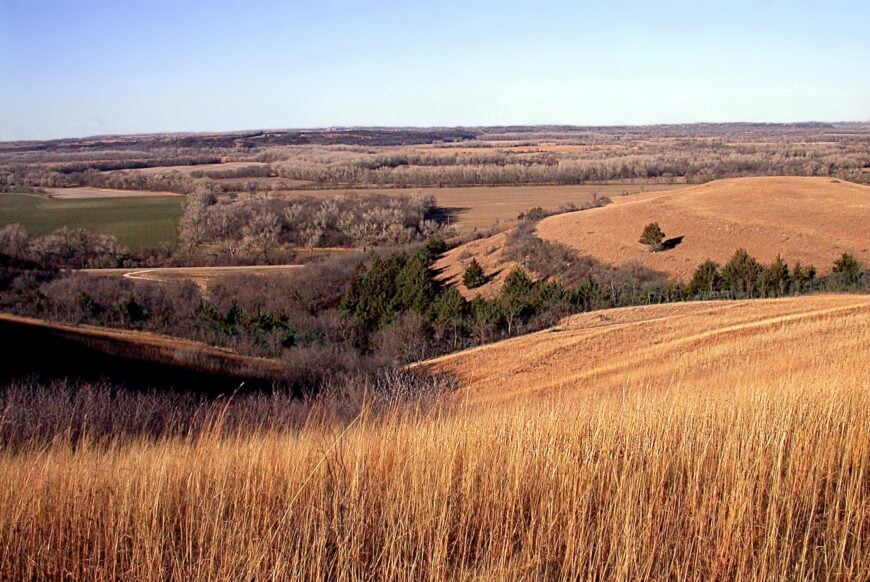
Southern Kansas might not make the glossy travel magazines, yet I’ve found its back roads and courthouse squares quietly shelter some of the most compelling stories in America’s farming past.
From Mennonite wheat growers to daring cattle-drive entrepreneurs, each town below preserves a slice of rural heritage and invites curious visitors to linger over barn quilts, bluegrass festivals, and home-baked pies. Pack your boots, an appetite for pie, and a sense of wonder—South Kansas is ready to share its fields and stories.
16. Argonia: Trailblazing Farming Community
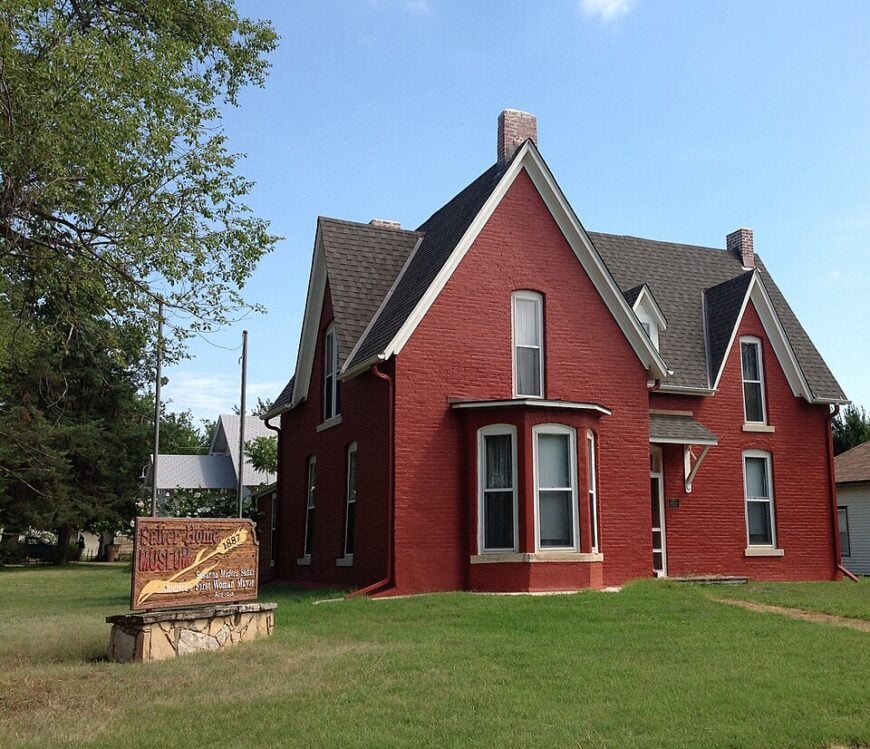
Argonia holds a special spot in state history because it chose Susanna M. Salter, the first female mayor in the United States, back in 1887. The surrounding sea of wheat and milo fields makes that pioneering spirit feel all the more grounded in hard work and harvest cycles.
I like dropping by the Argonia Historical Museum in the old Santa Fe depot, where horse-drawn cultivators sit beside early gasoline tractors. Each July, local growers host a melon-tasting day that proves south-central Kansas soil can be as sweet as any.
Anglers cast for channel cat in the lazy Ninnescah River, and a springtime hunt for wild asparagus along its banks is a cherished local secret. Before leaving, I always pause at the modest Salter House marker—it reminds me that progress can sprout on even the humblest homestead.
The average price for a 3-4 bedroom home in Argonia ranges from $75,000 to $135,000, offering an affordable option for those looking to experience small-town charm.
Where is Argonia?
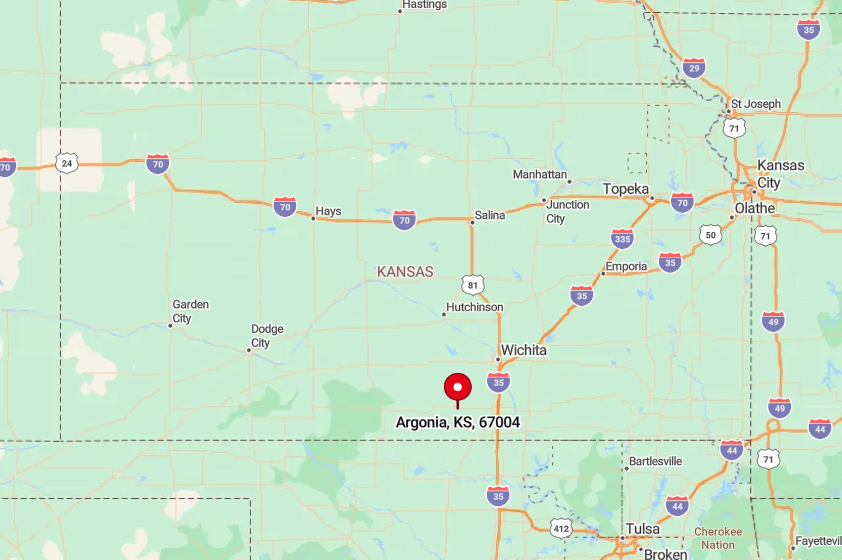
Argonia rests in Sumner County, roughly 45 miles southwest of Wichita and a short jog north of the Kansas–Oklahoma state line. Tucked along U.S. Highway 160, the town sits on fertile bottomland shaped by the South Fork Ninnescah River, which keeps pastures green even in dry years.
Drivers usually exit I-35 at Wellington and follow rolling ranch country westward for about twenty minutes. The drive is quick, but the view of grain elevators rising above the prairie announces you’ve arrived in wheat territory.
15. Anthony – A Farming Hub with Small-Town Charm
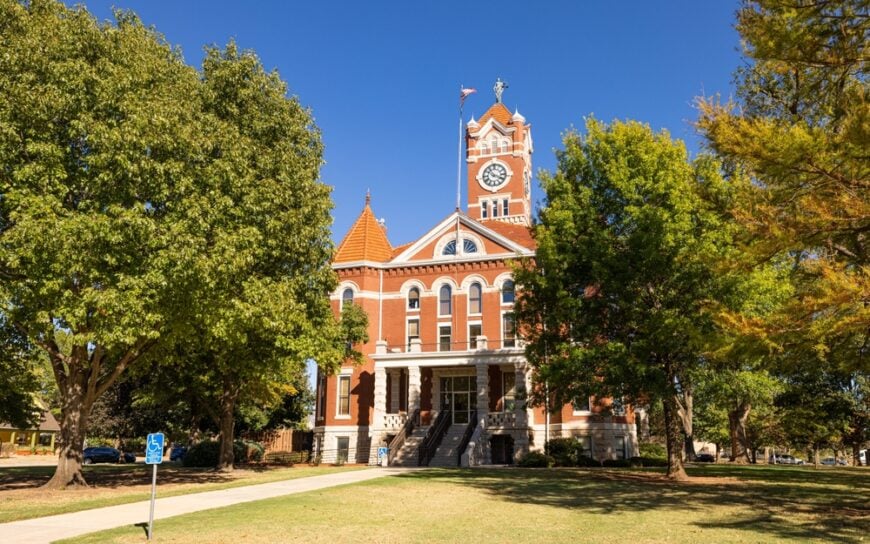
Anthony is one of those towns where agriculture is more than just an industry—it’s a way of life. Nestled in Harper County, it has long been a center for wheat and cattle farming, with generations of families working the land.
I love visiting the Anthony Farmers Market, where local growers showcase fresh produce and homemade goods. The annual Sunflower Festival is another highlight, celebrating the town’s deep farming roots with parades, craft fairs, and community gatherings.
Whether I’m driving past golden wheat fields or stopping by a local diner for a hearty meal, the town’s farming legacy is always present. 3-4 bedroom homes in Anthony typically range from $79,900 to $230,000, making it an affordable option for those looking to settle in a farming community.
Where is Anthony?

Anthony is located in southern Kansas, near the Oklahoma border. It sits along Highway 160, making it a convenient stop for travelers exploring the region’s agricultural history.
I usually take Highway 160 west from Wellington, enjoying the scenic drive through rolling farmland before arriving in Anthony. Its location makes it a perfect place to experience Kansas’ farming traditions firsthand.
14. Neodesha: Where Oil and Agriculture Intertwine
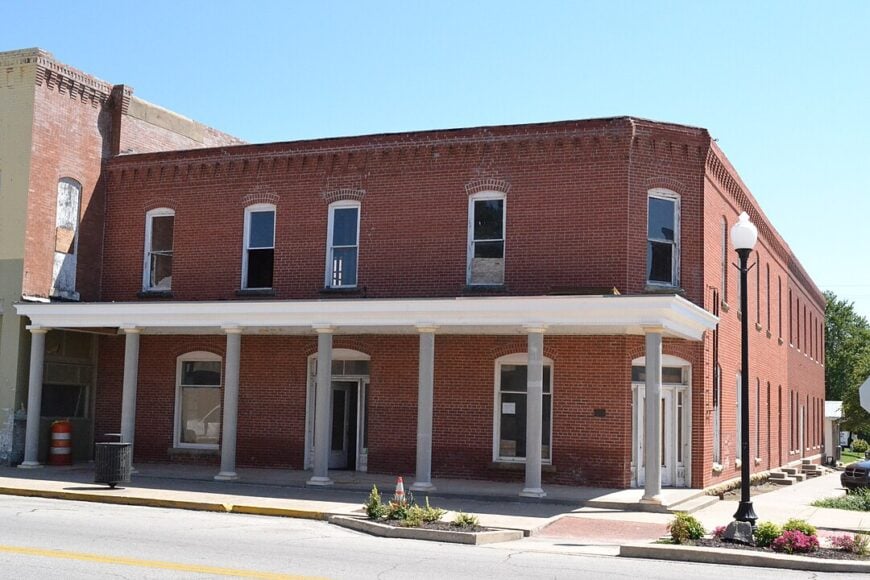
Neodesha’s claim to fame is Norman No. 1, the 1892 well that launched Mid-Continent oil production, yet farming has always paid the town’s grocery bills.
Rows of corn and soybeans stretch toward the Verdigris River, and you’ll still see cattle cooling off in shaded bends come July. I like exploring the Norman No. 1 Museum for drilling lore before ducking into the Iron Horse BBQ for a plate piled high with locally raised beef.
The Riverside Park complex hosts a summer farmers market where heirloom tomatoes sit beside vintage pump jacks—a fun juxtaposition. Hidden two miles east, the Little Bear Mound preserves ancient Native agricultural terraces, a reminder that cultivation here predates statehood by centuries.
Finish the day fishing for crappie at Wilson State Fishing Lake, stocked by local 4-H clubs since the 1930s. 3-4 bedroom homes in Neodesha typically cost between $85,000 and $170,000, reflecting the town’s balance of affordability and historical appeal.
Where is Neodesha?
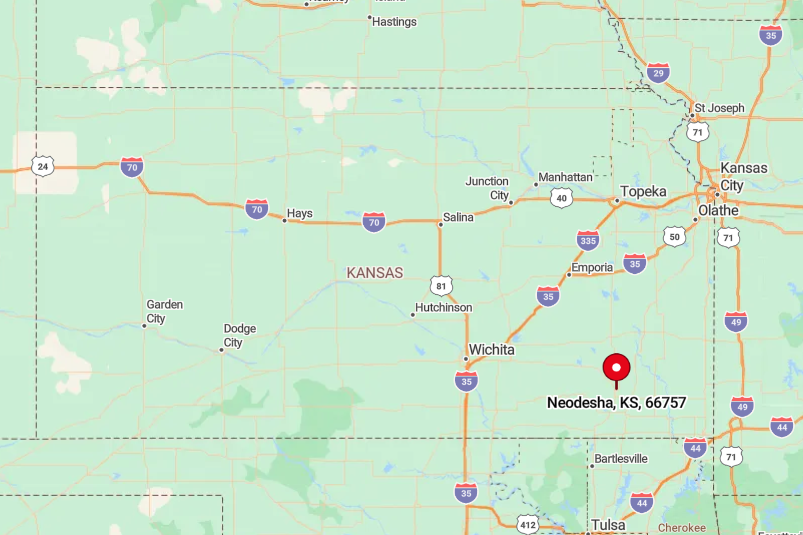
Situated in Wilson County, Neodesha lies at the fork of the Fall and Verdigris Rivers in southeast Kansas. U.S. Highways 75 and 400 intersect just north of town, so motorists from Wichita or Tulsa can reach it in under two hours.
The low river bluffs create rich alluvial fields, explaining why both oil drillers and farmers found success here. If you prefer rails, the South Kansas & Oklahoma short-line still hauls grain cars through downtown daily.
13. Eureka: Explore the Legacy of Cattle and Crops

Eureka’s name promises discovery, and I always uncover something new, from century-old limestone barns to modern grass-fed beef operations. The Greenwood County Historical Museum exhibits branding irons and old ranch ledgers that document the area’s open-range days.
Each June, the Eureka Pro Rodeo draws cowboys and cowgirls who still work the surrounding Flint Hills pastures. Between events, I picnic at Eureka City Lake, where blue herons patrol coves lined with blooming water willow.
A lesser-known treat is the Cowley Canyon Scenic Drive, southwest of town, offering sweeping views and occasional buffalo sightings on private preserves. The price range for 3-4 bedroom homes in Eureka is between $175,000 and $250,000, offering options for those seeking a blend of history and rural living.
Where is Eureka?
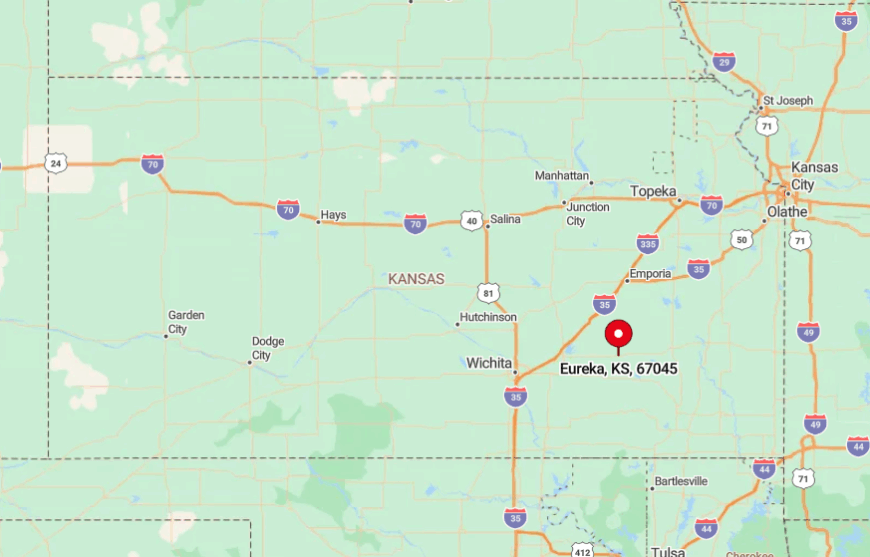
Eureka anchors Highway 54 about halfway between Wichita and the Kansas–Missouri border. Nestled where the Flint Hills meet the Cross Timbers, it enjoys a mix of tallgrass and oak-hickory woodlands that once supplied both grazing and timber.
Travelers usually exit I-35 at El Dorado and head east for an hour, watching the landscape subtly shift from open prairie to rolling hills. Small-town airports and well-marked county roads make it a convenient base for exploring remote ranch country.
12. Yates Center: The Hay Capital’s Historic Charm
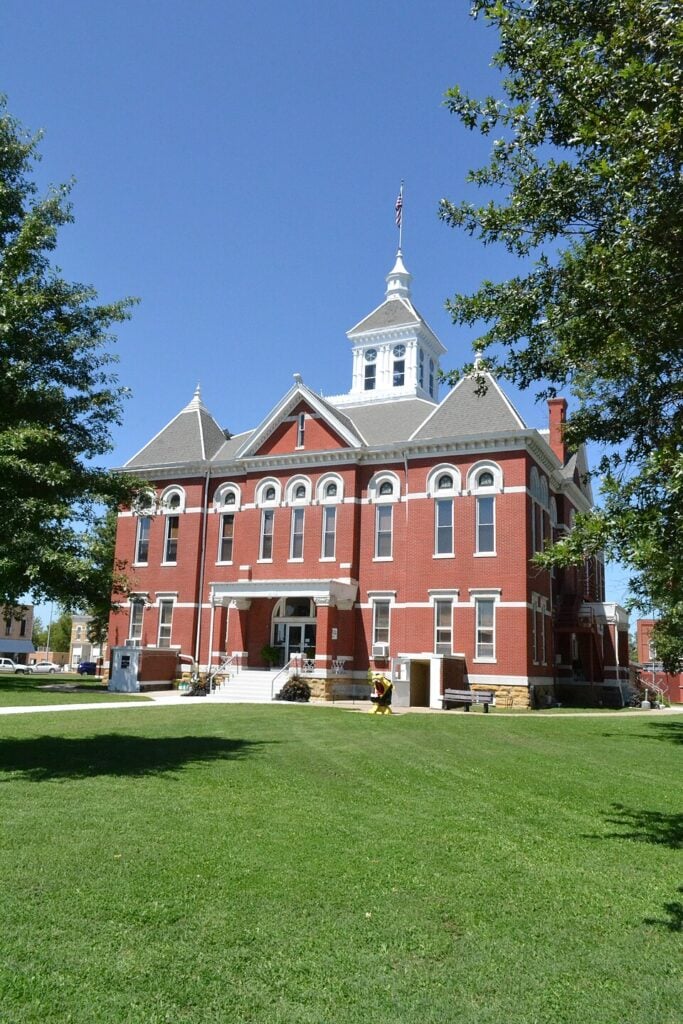
Yates Center proudly brands itself the “Hay Capital of the World,” a title earned during the 1920s when local prairies shipped alfalfa bales nationwide. The handsome Italianate courthouse anchors a town square still ringed by feed stores, saddle shops, and an old opera house now hosting bluegrass jams.
I like timing my visit for Yates Center Days, when a hay-sculpture contest turns round bales into whimsical farm critters. Antique collectors shouldn’t miss The She Shed, a back-alley trove of enamelware and tractor seats.
After lunch at The Cornerstone, I often drive north to Owl Creek Reservoir, where migrating waterfowl rest among hay meadows—a photographer’s delight. If you’re lucky, a local farmer might let you ride atop a bale wagon and smell that sweet alfalfa up close.
3-4 bedroom homes in Yates Center are priced between $110,000 and $190,000, making it an appealing choice for families looking for historical farming roots at a reasonable cost.
Where is Yates Center?
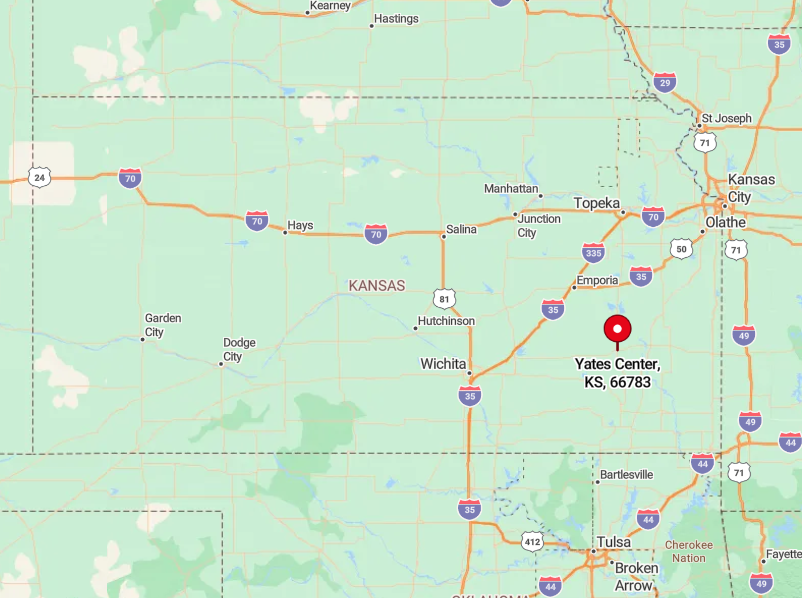
The town sits at the junction of U.S. Highways 54 and 75, right in Woodson County’s rolling prairie. Its slightly elevated plateau keeps fields well-drained, a boon for top-quality hay.
Drivers from Kansas City usually follow Highway 75 south after crossing the Flint Hills; those from Wichita head east on Highway 54. Either way, the last miles reveal endless green rectangles of alfalfa, neatly wind-rowed and ready for baling.
11. Kiowa – A Historic Farming Town on the Kansas Border
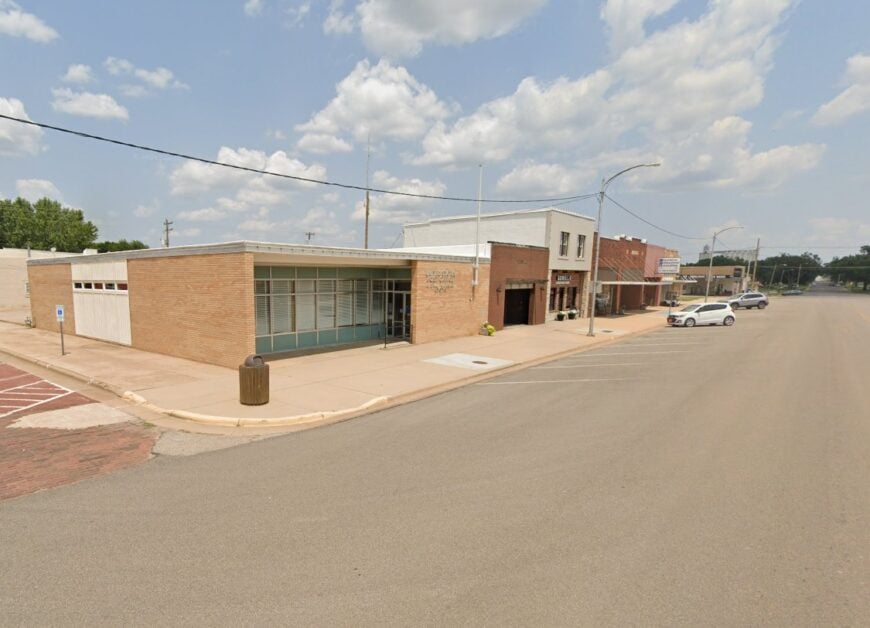
Kiowa is a town that immediately transports me to the heart of Kansas’ farming heritage. Located near the Oklahoma border, it has long been a hub for grain production and cattle ranching.
I love wandering through its historic downtown, where old storefronts and grain elevators stand as reminders of the town’s agricultural past. The annual Pioneer Days festival is a must-see, celebrating Kiowa’s farming traditions with rodeos, parades, and local crafts.
Whether I’m exploring its farming history or simply enjoying the quiet beauty of the surrounding fields, the town always feels like a step back in time. 3-4 bedroom homes in Kiowa typically range from $59,000 to $86,300, making it an affordable choice for those looking to live in a historic farming town.
Where is Kiowa?
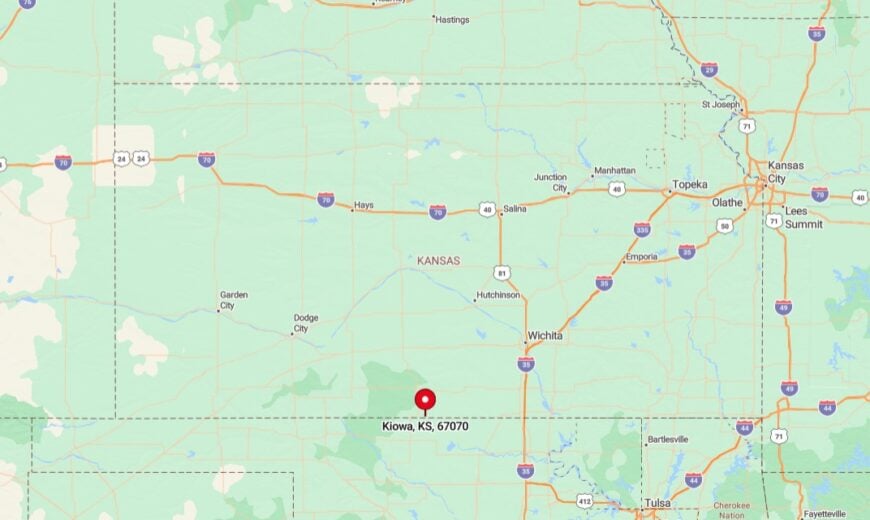
Kiowa is located in Barber County, in southern Kansas. It sits along Highway 2, making it an accessible and incredible stop for travelers heading toward the Oklahoma border.
I usually take Highway 2 south from Medicine Lodge, enjoying the drive through farmland and prairie landscapes before arriving in Kiowa. Its location makes it a great place to experience Kansas’ agricultural traditions.
10. Harper – A Farming Community with Deep Roots
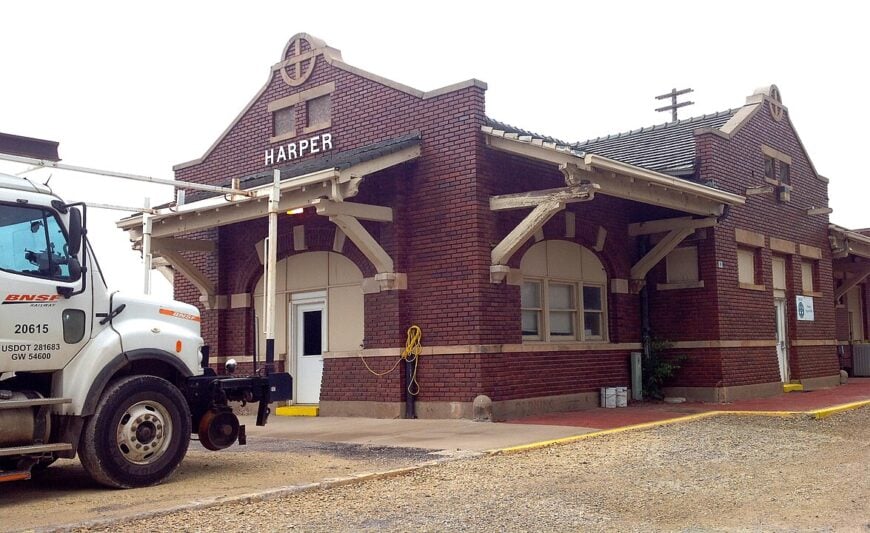
Harper is a town that embodies the spirit of Kansas agriculture. Surrounded by wheat fields and cattle ranches, it has been a farming hub for generations.
I love visiting the Harper County Fair, where local farmers showcase their livestock and produce. The town’s historic grain elevators stand tall, reminding me of its long-standing role in Kansas’ agricultural economy.
Whether I’m exploring its historic sites or simply taking in the beauty of the open fields, Harper always feels like home. 3-4 bedroom homes in Harper typically range from $91,772 to $125,000, making it an affordable option for those looking to settle in a farming town.
Where is Harper?
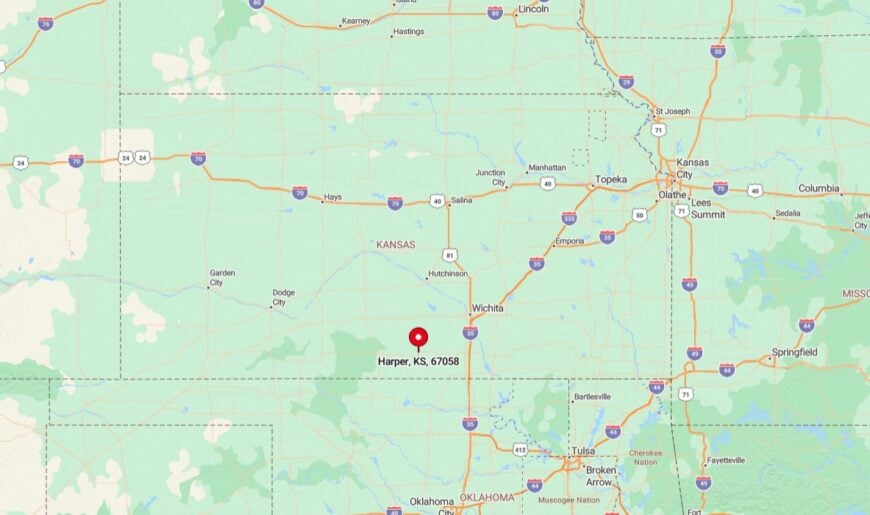
Harper is located in southern Kansas, near the Oklahoma border. It sits along Highway 14, making it a convenient stop for travelers exploring Kansas’ agricultural heartland.
I usually take Highway 14 south from Wichita, enjoying the drive through rolling farmland before arriving in Harper. Its location makes it a perfect place to experience Kansas’ farming traditions.
9. Arkansas City – A Farming Legacy Along the Border
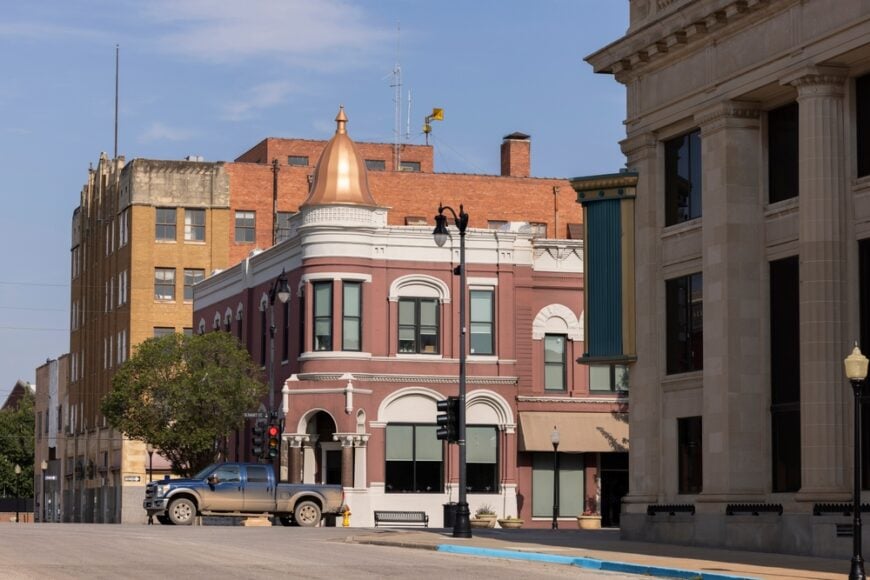
Arkansas City is a town where agriculture has shaped its identity for generations. Located near the Oklahoma border, it has long been a hub for wheat and cattle farming, with deep roots in Kansas’ farming traditions.
I love visiting the local farmers’ markets, where fresh produce and homemade goods highlight the town’s agricultural heritage. The annual Arkalalah Festival is a must-see, celebrating the community’s farming history with parades, rodeos, and traditional Kansas-style cooking.
Whether I’m exploring its historic sites or driving past golden wheat fields, the town’s agricultural spirit is always present. 3-4 bedroom homes in Arkansas City typically range from $118,000 to $250,000, making it an affordable option for those looking to settle in a farming community2.
Where is Arkansas City?
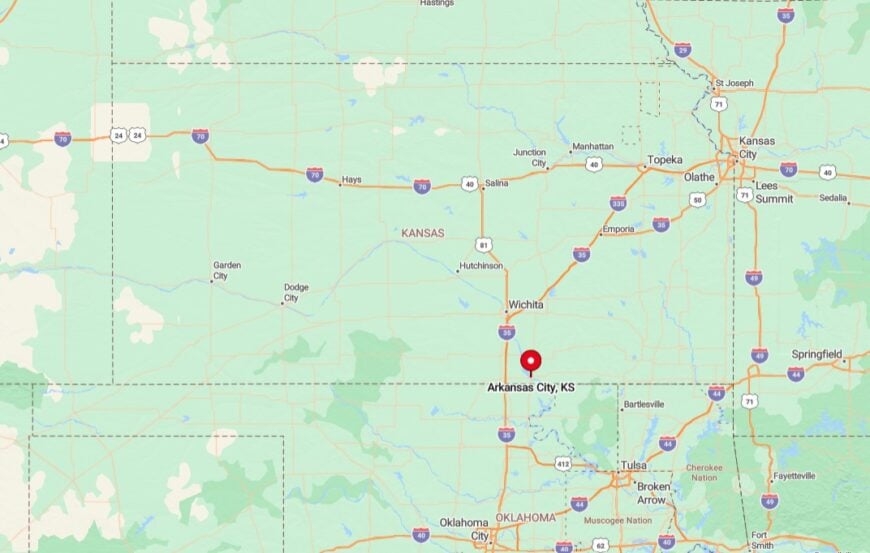
Arkansas City is located in Cowley County, in southern Kansas. It sits along Highway 77, making it a really convenient stop for travelers exploring the region’s farming history.
I usually take Highway 77 south from Wichita, enjoying the drive through rolling farmland before arriving in Arkansas City. Its location makes it a perfect place to experience Kansas’ agricultural traditions firsthand.
8. Belle Plaine – A Small Town with Deep Farming Roots

Belle Plaine is a town that embodies the essence of Kansas agriculture. Surrounded by fertile farmland, it has been a center for wheat and livestock farming for generations.
I love visiting the Belle Plaine Historical Museum, where exhibits showcase the town’s farming heritage and early settlement history. The annual Tulip Time Festival is another highlight, celebrating the region’s agricultural beauty with vibrant tulip fields and community events.
Whether I’m exploring its historic sites or simply taking in the beauty of the open fields, Belle Plaine always feels like home. 3-4 bedroom homes in Belle Plaine typically range from $100,000 to $250,000, making it an affordable option for those looking to settle in a farming town4.
Where is Belle Plaine?
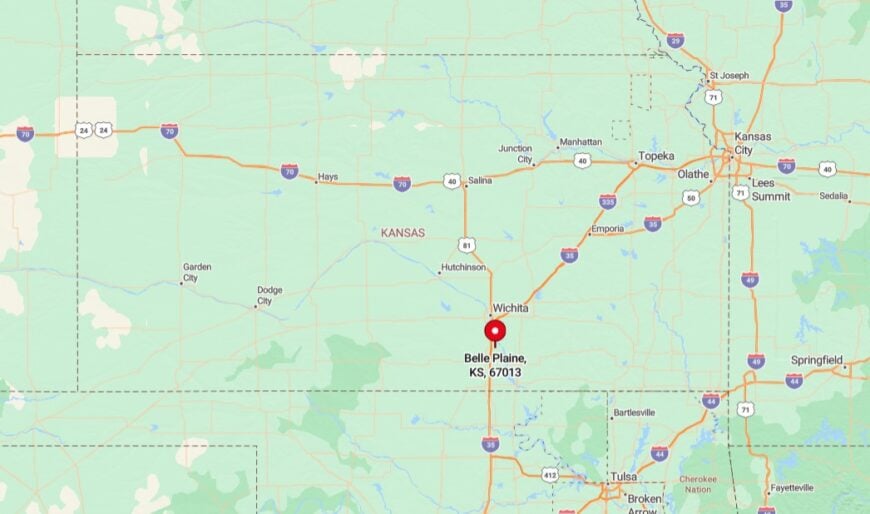
Belle Plaine is located in Sumner County, in southern Kansas. It sits along Highway 55, making it an accessible stop for travelers exploring Kansas’ agricultural heartland.
I usually take Highway 55 south from Wichita, enjoying the drive through farmland and prairie landscapes before arriving in Belle Plaine. Its location makes it a great place to experience Kansas’ farming traditions.
7. Medicine Lodge: Where Farming Meets Frontier History
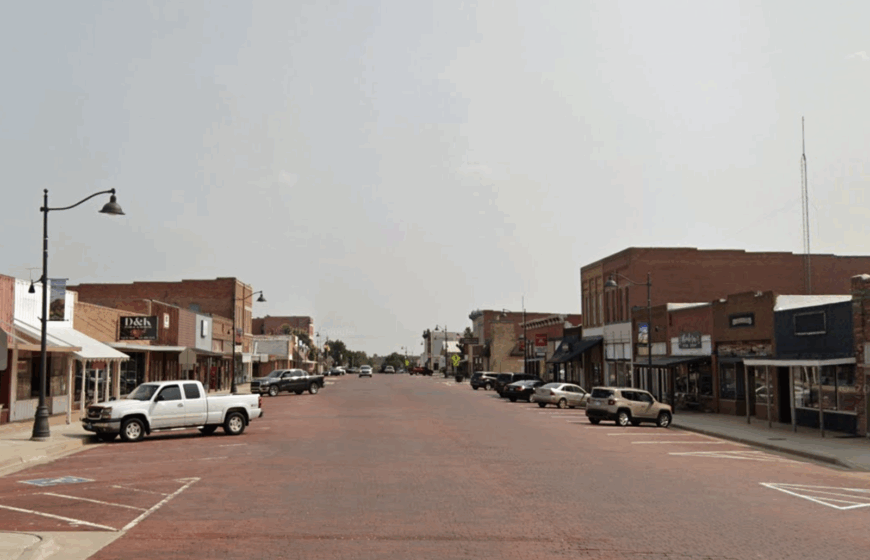
Medicine Lodge merges frontier lore with present-day ranch life, most famously through the Peace Treaty Pageant staged every three years in a natural amphitheater overlooking wheat fields.
The Stockade Museum re-creates an 1870s settlement, complete with sod garden beds demonstrating pioneer vegetable varieties. I always stop at the Carrie Nation House to learn how the temperance crusader’s farm upbringing shaped her resolve.
Southwest of town, the Gypsum Hills Scenic Byway twists through red mesas where cow-calf herds graze among cedar canyons. A seldom-mentioned gem is the local flour mill’s outlet store, which sells small-batch whole-grain mixes ground from regional hard red winter wheat.
Tie the day together with a sunset horseback ride offered by nearby ranches—the glowing bluffs look painted. 3-4 bedroom homes in Medicine Lodge are priced between $75,000 and $140,000, offering an affordable choice for those wanting to embrace small-town life with rich farming history.
Where is Medicine Lodge?
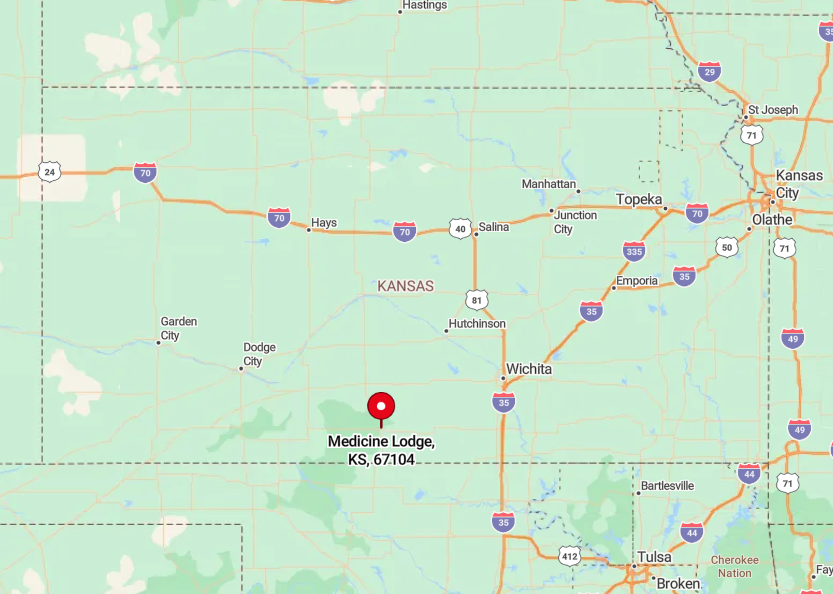
Medicine Lodge sits in Barber County on U.S. Highway 281, about 75 miles southwest of Wichita. The town nestles against the Medicine Lodge River at the edge of the Gypsum Hills, whose red shales contrast sharply with golden wheat fields.
Most visitors take Highway 160 west from Wellington, a scenic route lined with grain elevators and feedlots. The local airport welcomes small planes, handy for hunters and anglers heading deeper into cattle country.
6. Dexter – A Historic Farming Town with Rural Charm

Dexter is a town that immediately transports me to the heart of Kansas’ farming heritage. Located in southern Kansas, it has long been a hub for cattle ranching and grain production.
I love wandering through its historic downtown, where old storefronts and grain elevators stand as reminders of the town’s agricultural past. The annual Dexter BBQ Festival is a must-see, celebrating the town’s farming traditions with local food, music, and community gatherings.
For those who appreciate small-town charm and wide-open spaces, Dexter is a perfect destination. 3-4 bedroom homes in Dexter typically range from $117,000 to $200,000, making it an affordable choice for those looking to live in a historic farming town6.
Where is Dexter?
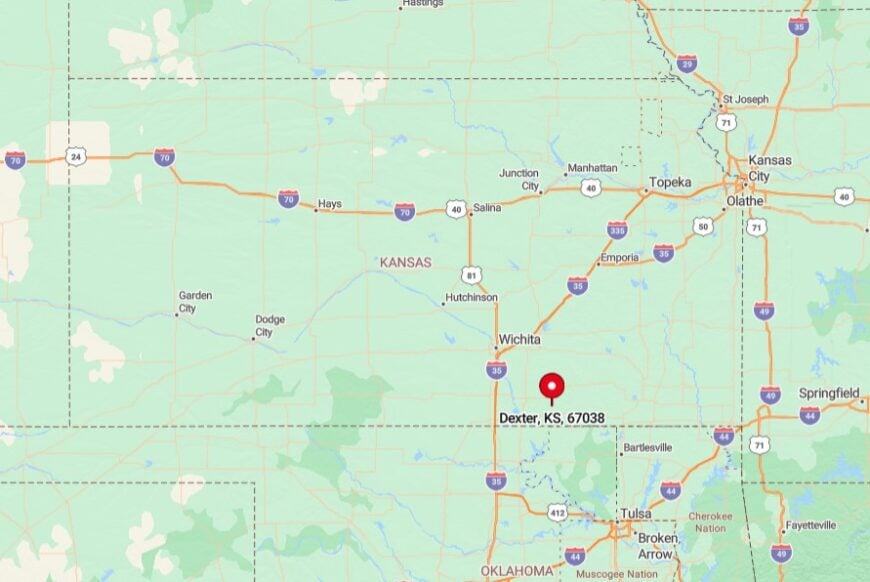
Dexter is located in Cowley County, in southern Kansas. It sits along Highway 15, making it an accessible and incredible stop for travelers heading toward the Oklahoma border.
I usually take Highway 15 south from Winfield, enjoying the drive through farmland and prairie landscapes before arriving in Dexter. Its location makes it a great place to experience Kansas’ agricultural traditions.
5. Howard: Experience Rural Heritage in the Flint Hills
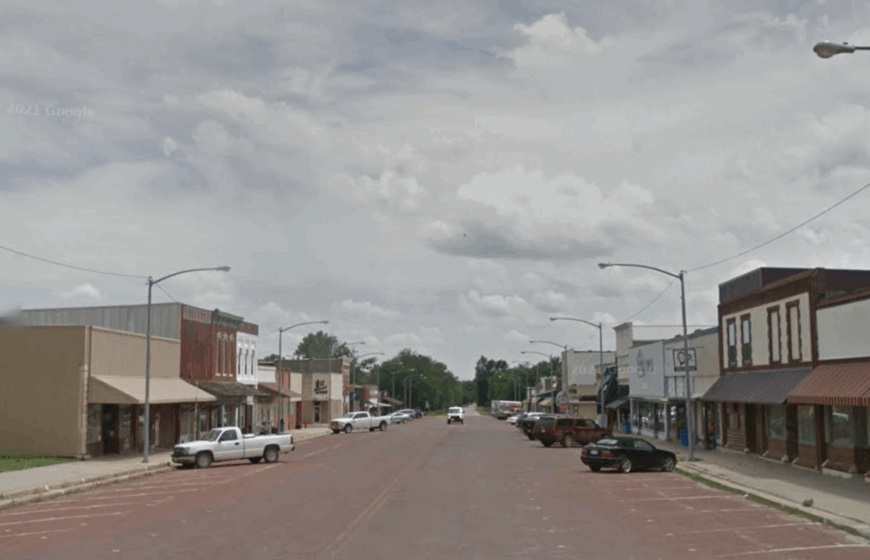
Howard may only count a few hundred residents, yet it radiates hospitality rooted in the rhythm of cow-calf operations and alfalfa fields. The Elk County Museum displays an intricate hand-stitched map of pioneer homesteads that I could study for hours.
Each August, the Elk County Free Fair fills the midway with 4-H livestock shows and a wheat-threshing demonstration powered by a 1912 steam engine. Five miles west, Moline Waterfall surprises many first-timers who assume prairie means flat—bring sturdy shoes for the short hike.
A hidden gem is Toot’s Drive-In, where ranch hands swear by the fried onion burger after a day stacking hay. If you linger until dusk, you might hear prairie chickens booming from nearby leks, a haunting echo of pre-settlement Kansas.
The average price for a 3-4 bedroom home in Howard ranges from $65,000 to $90,000, providing an extremely affordable entry into rural living with historical significance.
Where is Howard?
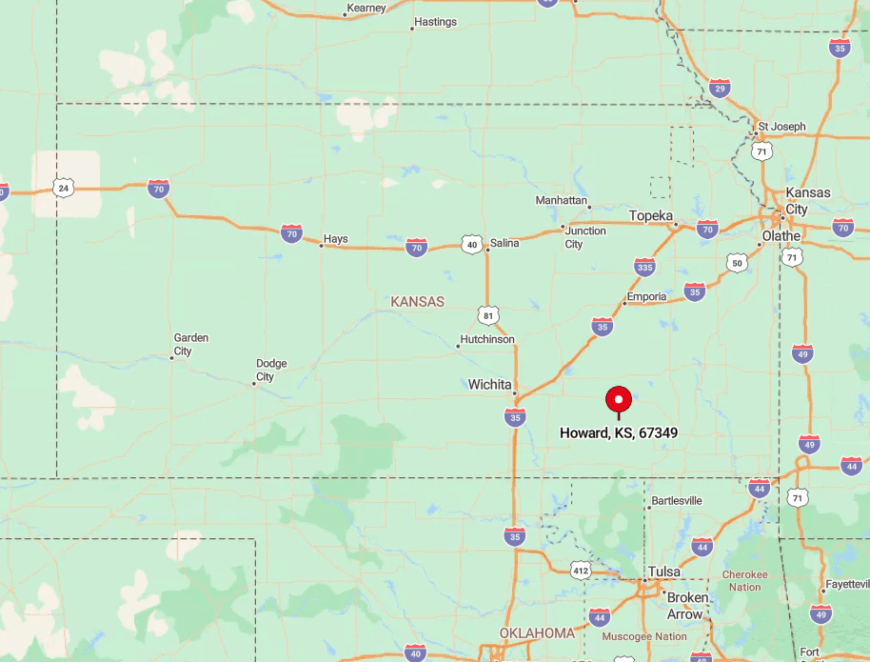
Howard is the seat of Elk County on U.S. Highway 160, roughly 65 miles southeast of Wichita. The town sits atop limestone bluffs overlooking the West Elk Creek valley, granting panoramic views of native pasture.
Most travelers exit I-35 at Augusta, then wind through rolling Flint Hills countryside for about an hour. County Road 33 cuts north–south past several historic one-room schoolhouses, making the drive feel like a moving museum.
4. Fredonia: Discover Historic Agricultural Treasures
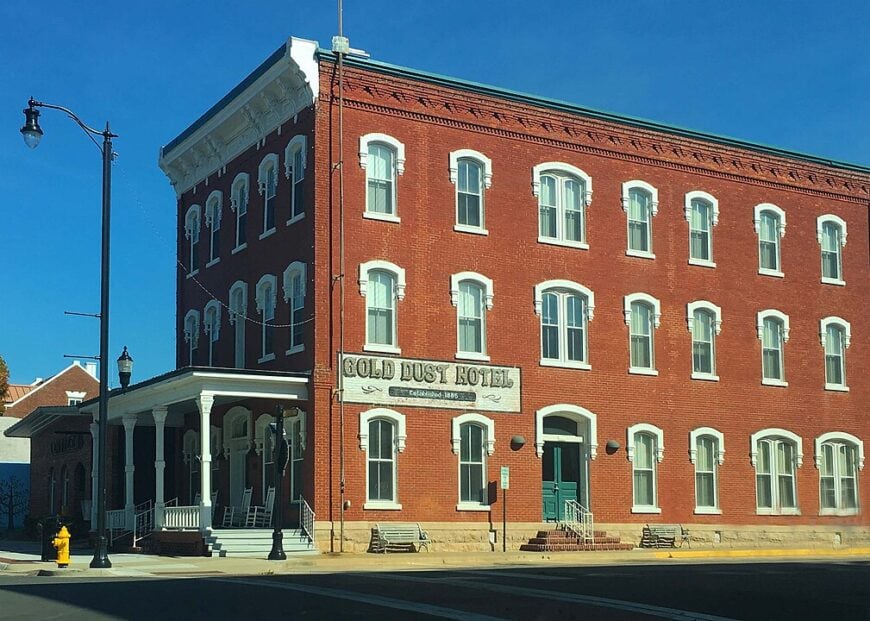
Fredonia’s downtown still sports 19th-century limestone storefronts built with rock quarried from surrounding hills, many originally financed by booming corn and cattle markets.
I enjoy the Wilson County Old Iron Club grounds, where vintage tractor pulls thunder each spring over soil once tilled by horse teams. The restored Stone House Gallery hosts art shows focused on rural life—don’t miss its photography exhibit of abandoned barns.
If you fancy a stroll, the Historic Barn Trail maps ten architecturally unique barns within a 15-mile radius, including a rare 12-sided design near Coyville. At dusk, catch a movie at the Batley Family Outdoor Theater, set on a hayfield fringed by fireflies.
For a snack, stop at Pracht’s Market, famous for smoked German sausage made with local pork since 1899. 3-4 bedroom homes in Fredonia typically cost between $90,000 and $175,000, reflecting the area’s small-town feel and historical farming heritage.
Where is Fredonia?
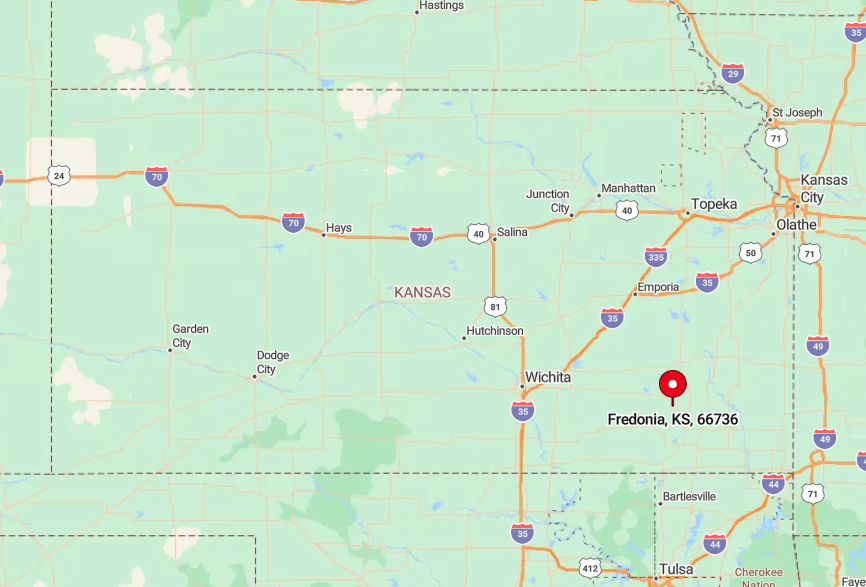
Fredonia rests at the junction of U.S. Highway 400 and Kansas 39 in Wilson County, southeast Kansas. Sandstone outcrops give the terrain a gentle, corrugated feel, perfect for cattle yet still easy to cultivate.
Drivers from Wichita or Joplin can reach town in about 90 minutes, with Highway 400 rolling through endless pasture. Short-line rail still serves the grain elevator, proof that farming remains the town’s beating heart.
3. Sedan: Step Back in Time Amidst Rolling Farmlands
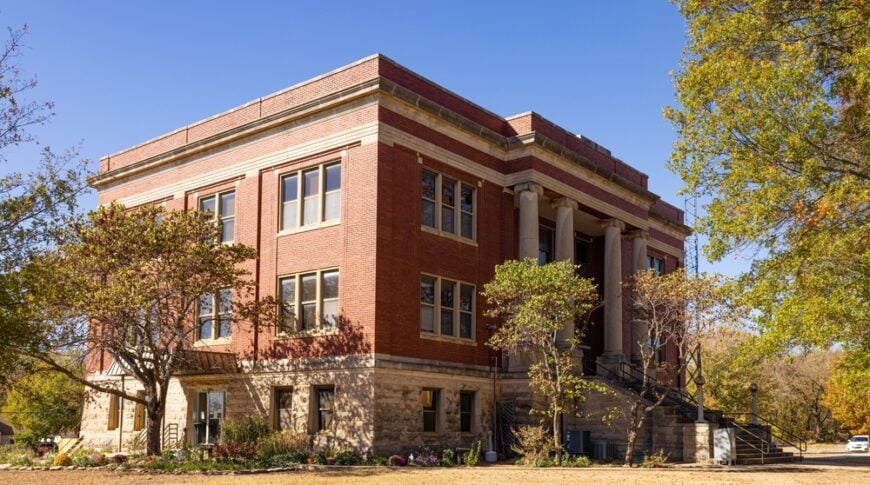
Sedan greets visitors with a main street lined by iron-front buildings and painted ghost signs advertising old seed companies. The Chautauqua County Historical Museum features Emmett Kelly memorabilia alongside displays of early ranching tools, an odd yet delightful pairing.
I often join a guided tour at Hollow Water Ranch, where cowboys demonstrate low-stress cattle handling that keeps century-old traditions alive. Just east, Red Buffalo Ranch offers horseback rides across oak-studded hills that glow bronze every autumn.
On Friday nights, the Safari Run Drive-In Theater projects movies toward a backdrop of grazing cattle—bring a lawn chair and a blanket. In Sedan, 3-4 bedroom homes are priced between $110,000 and $160,000, making it a great option for those seeking a blend of affordability and a rich farming history.
Where is Sedan?
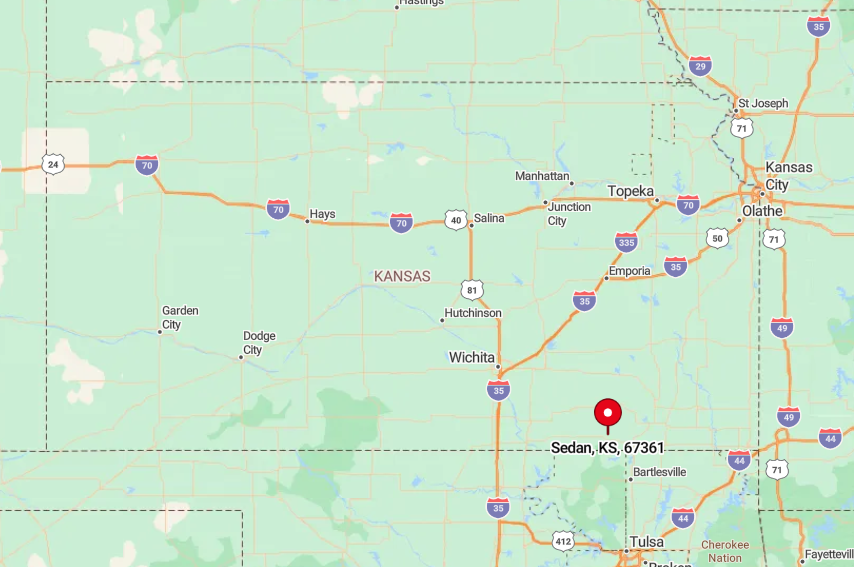
Sedan sits in Chautauqua County on Kansas Highway 99, about 15 miles north of the Oklahoma border. The town nestles among low limestone hills that catch more rainfall than western Kansas, making mixed farming of cattle and row crops feasible.
Most visitors travel south from Independence on U.S. Highway 75, then swing west toward those emerald-green pastures. The drive is easy, but look sharp—white-tailed deer often bound across the road at dusk.
2. Caldwell: The Old Cowtown with Farming Roots
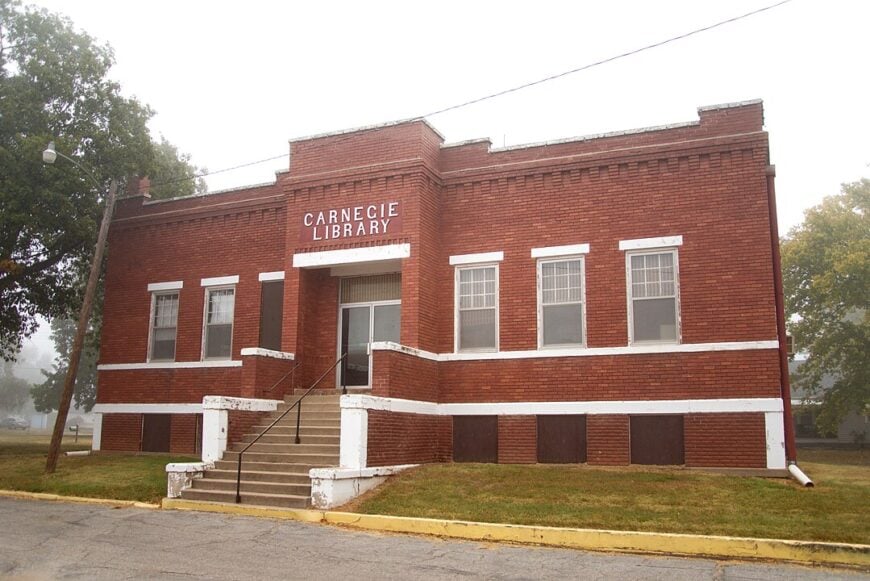
Caldwell once rang with the rowdy clang of saloons greeting Texas trail herds, yet today its quiet streets honor farming as much as frontier lore. The Chisholm Trail Museum displays branding irons and seed sacks, illustrating how cattle profits soon funded fertile wheat farms.
I like timing my visit for the Fall Border Queen Carnival, featuring a tractor parade that moves right down Main Street. Outside town, the nearly forgotten Ghost Bridge spans the Chikaskia River and leads to native pecan groves where locals still harvest by hand.
Quail hunters favor surrounding CRP fields, a modern government program that ironically re-creates native grass once trampled by longhorns. 3-4 bedroom homes in Caldwell are priced between $89,000 and $130,000, providing a budget-friendly option for families seeking a rural and historic setting.
Where is Caldwell?

Caldwell is perched on U.S. Highway 81 at the very edge of Kansas, only a stone’s throw from the Oklahoma line in Sumner County. The Chicaskia River meanders just east of town, feeding bottomland that yields some of the county’s highest wheat averages.
Drivers from Wichita follow I-35 to the South Haven exit, then jog west for ten minutes through rolling cropland. The historic Santa Fe rail bed, now a gravel trail, offers cyclists a flat route into the Oklahoma tallgrass.
1. Winfield: Embrace the Heart of Kansas Wheat Country
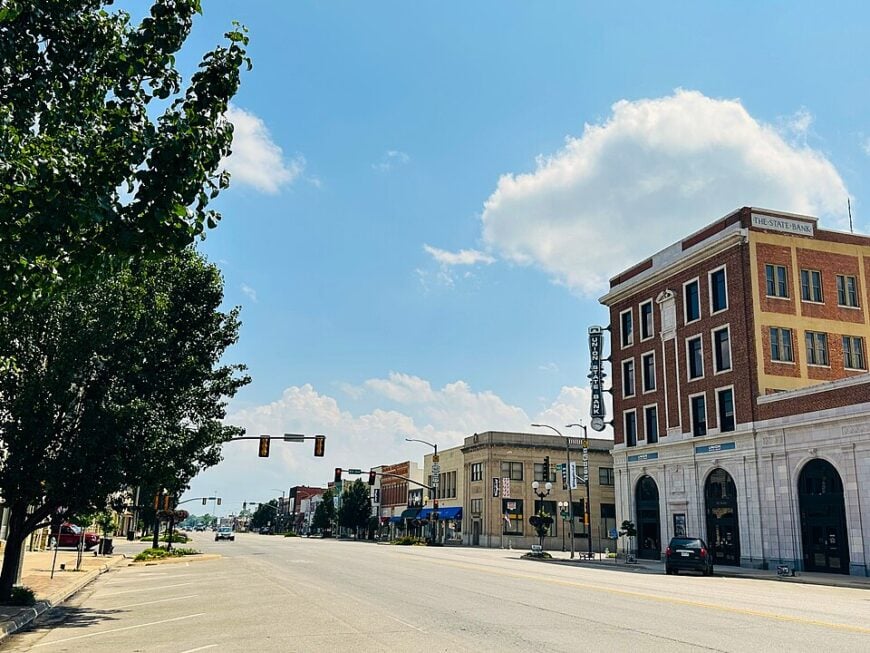
Winfield tops my list because it skillfully balances a rich agricultural heritage with lively cultural flair, all framed by gleaming wheat fields. The Walnut Valley Festival every September turns Island Park into a bluegrass mecca, drawing pickers who camp beneath towering pecan trees planted by early homesteaders.
I start mornings at the Cowley County Historical Museum, whose barn-loft exhibit explains how Turkey Red wheat made this region the breadbasket of the world. Then I head south to Quail Ridge Farm for a hands-on beekeeping tour that contrasts industrial grain with artisanal honey.
The hidden gem here is the Shindig at Gottlob Lawn, a casual Friday gathering where locals swap heirloom seed packets and fiddle tunes in equal measure. Cap the evening on the banks of the Walnut River, watching grain trucks roll across the bridge—modern echoes of a farming story still unfolding.
The average price for a 3-4 bedroom home in Winfield falls between $135,000 and $200,000, making it an attractive choice for those looking for both historical charm and modern conveniences.
Where is Winfield?
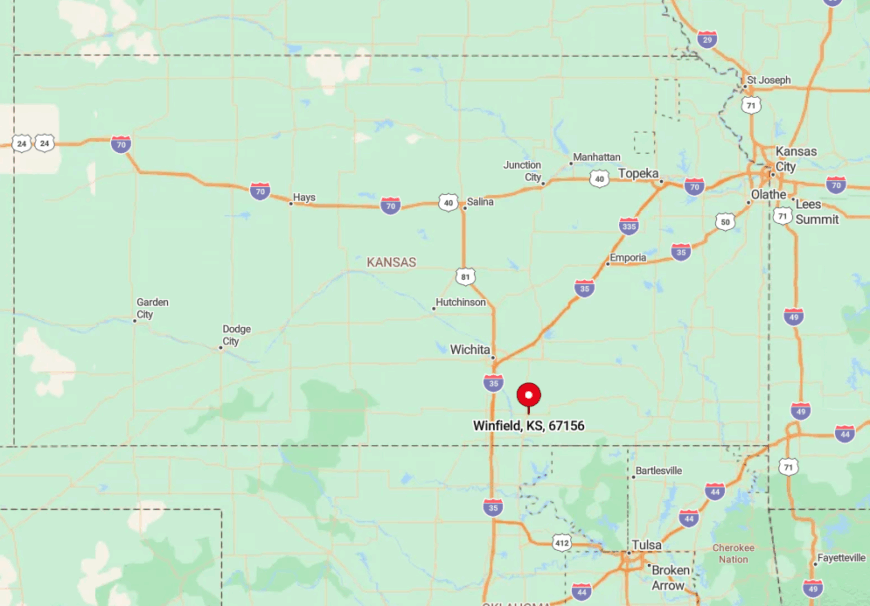
Winfield anchors Cowley County along U.S. Highway 77, about 45 minutes southeast of Wichita. The town hugs the Walnut River valley, whose rich alluvium nurtures both row crops and the state’s oldest commercial pecan orchards.
Drivers usually exit the Kansas Turnpike at El Dorado, then glide through softly rolling prairie before spotting Winfield’s twin grain elevators. For a scenic alternative, follow the curvy Highway 160 east from Wellington, passing sunflower fields that blaze yellow in late summer.



